Opinion: If I Ruled FAU Athletics this is what I would do
How a few suggestions could change the culture of FAU athletics
Ask any sports fan about their favorite team and what they believe should be changed to gain more success. You’ll probably get an aggressive tirade on why coach Joey bag o’ donuts should be fired, how the team’s salary cap is too big, or the benefits of having a scoreboard that shoots fire (if that doesn’t put asses in the seats, I have no idea what will). The more I listen to a fan’s tirade, the more I put myself in that fan’s shoes.
Being an FAU student for one semester exposed me to many different parts of our athletic programs, bad and good. I’ve been up to my neck in FAU Athletics both as a reporter and occasional spectator, and if given the opportunity to make changes, I would.
I’m no expert at recruiting. I don’t have the extensive time to budget, or the attention span to listen to an NCAA representative ramble on about violations and rules at a meeting. I do have two eyes and a mouth to express my displeasure. So, as a power-hungry teenager with opinions, here are three changes I would make as FAU’s athletic director:
- I would not have made FAU Stadium’s capacity as large as it is. Looking at the stadium, it’s quite the beautiful building. Built in 2011, the stadium still feels new, with a sea of blue seats seeming endless right before the field. With an official capacity of 30,000, many outsiders might expect the stadium to fill up on game day. But Saturday rolls around, and that sea of blue seats is still there. With an average attendance of around 14,000 fans last season (FAU ranked 124th out of 128 teams in attendance during the 2013 season), this $70 million stadium seems more wasteful than anything else. As athletic director I would have tried to steer for a smaller stadium to be built. Originally playing their home games at Lockhart Stadium, a 20,000-seat field in Fort Lauderdale, FAU could not fill the stadium even then. FAU saw big expansion in its future, but with a team that has gone 13-35 in the past four seasons, fans don’t have much reason to show up. Which leads me to my next point.
- Build a tradition for fans. FAU’s athletic programs had varied success over their history, ranging from conference championship seasons to pitiful disasters on the field. In the stands, the fans haven’t had many traditions to stand by. The Student Alumni Association and their PrOWLers do ring the victory bell after football victories, we do have a fight song, and we do have some chants and cheers. But other than that, FAU Athletics does not try to create any lasting traditions. This lack of tradition is eminent, especially in a program still trying to make itself a winner in many of the sports it competes in. As AD I would try to help students create a tradition people would want to participate in. One example is at Auburn where people toilet paper trees at Toomer’s corner, an intersection in town. Students and fans celebrated wins there constantly since 1896 by throwing ticker tape over the wires there after games, but the TPing started in 1972 after Auburn running back Terry Henley commented that his team would “beat the No. 2 outta Alabama,” alluding to Alabama being the second-best team in the nation at the time. Tradition is not something to be forced, but If FAU could find something to unite fans and get people to be interested in athletics, the fans could create a lasting image for FAU.
- Pay Student-Athletes. My biggest problem with the NCAA and FAU Athletics has been their inability to pay student athletes at least a small stipend until recently, when the NCAA cleared conferences and their members to begin paying stipends. While many student athletes have scholarships that pay for some or all of their tuition, many still need money for other outside expenses. With rigorous class and practice schedules, many athletes cannot get a job on top of the things they do. If you think it’s crazy to suggest student athletes get paid, consider this idea. As a student athlete, you often get media exposure over various platforms. For the rights of the NCAA men’s basketball tournament alone, CBS and Turner Broadcasting will pay a total of $10.8 billion over 14 years (the deal started in 2010), which comes out to $800 million per season for the NCAA. This is just for the end of the season tournament, which lasts about three weeks and has about 65 games from the preliminary games to the final. While the NCAA does disperse this money to its member institutions and conferences, it claims most of the money goes back to the athletes through programs and scholarships. But why not directly give athletes the money? Professional athletes are paid big money for the same exposure many college athletes get. It seems unfair to not give your workers some kind of compensation, especially if they are having their likenesses used in broadcasts and if they are the ones building the brand: helping sell tickets and apparel. Pat Chun, our current athletic director, is working to get athletes on scholarship a $4,500 cost of living adjustment added to the aid they already get. I think this is a reasonable amount, and it can be given to athletes in all sports.
These changes would not be too big in the scheme of current things (except maybe the stadium, that’s more of a hindsight move), but if implemented correctly they could improve the way the Athletic Department operates over time.
With any luck, FAU can find a point where students and alumni could have something to be proud of, an athletic program that is successful and creates positive memories for all involved.
Ryan is a senior multimedia journalism major who's minoring in business law and psychology. He was once a two-time editor in chief for the paper, but that's...

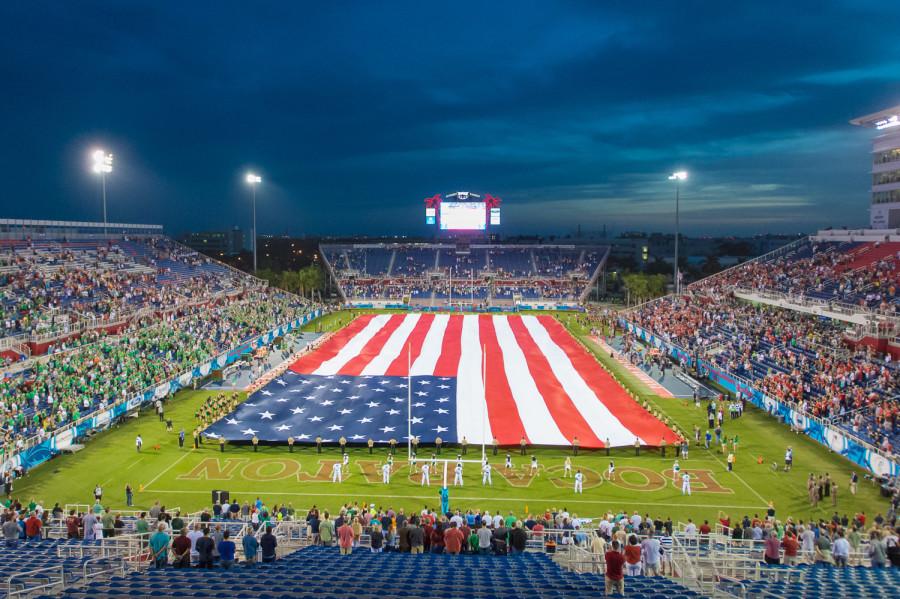

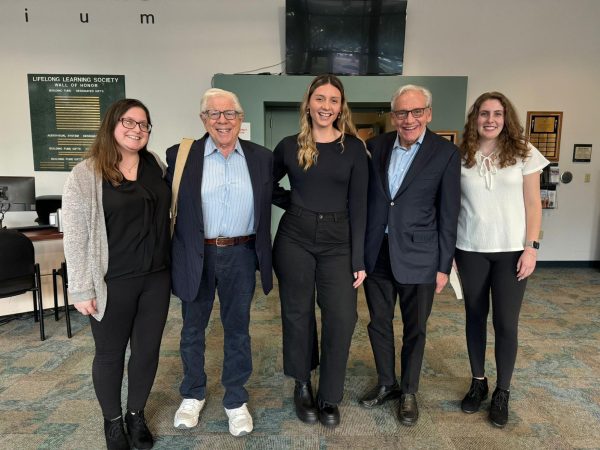
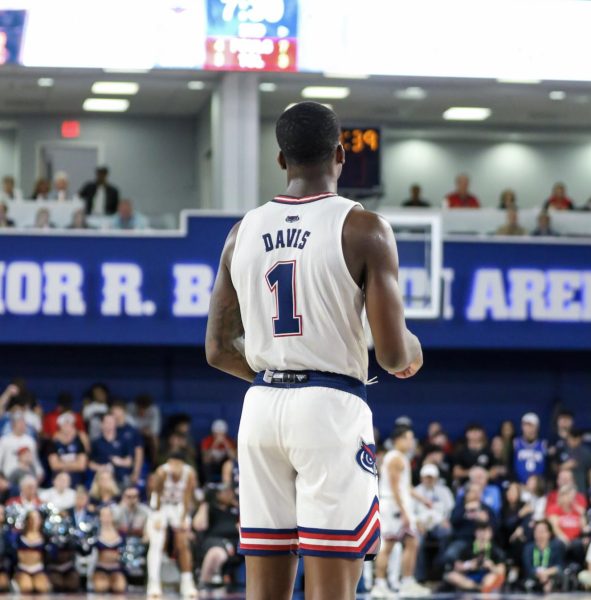
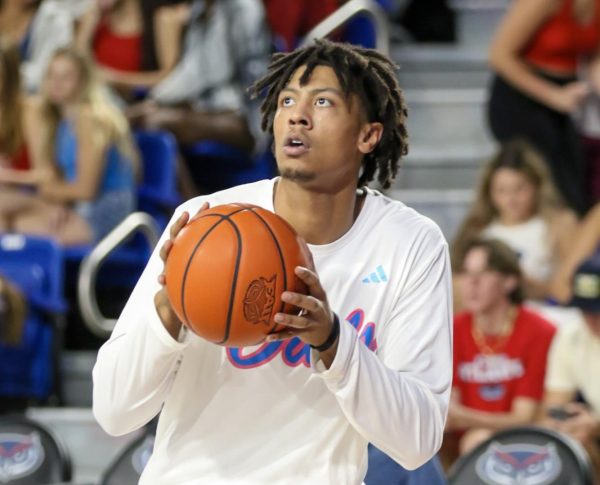
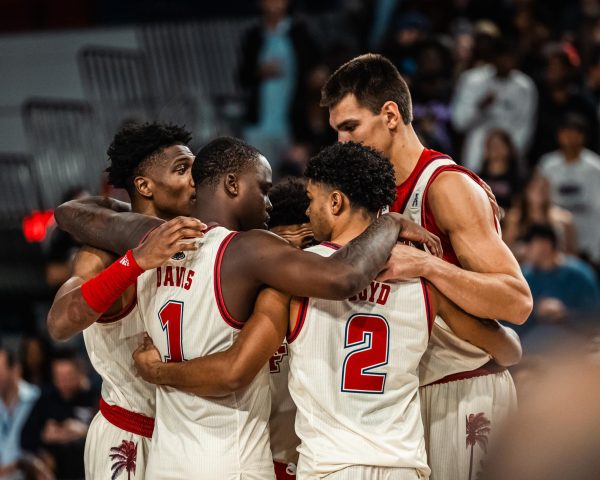






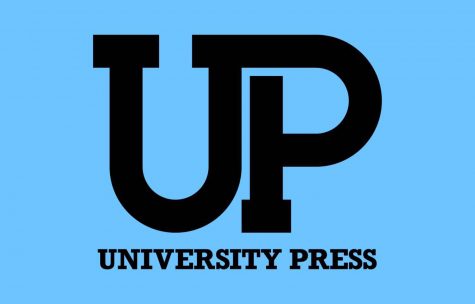

caj • Jan 30, 2015 at 10:50 am
I think 30k seats is a sufficient number as well, we have to keep in perspective that FAU’s football program is only about 13 years old, an infant among college football programs, with some that have been around for well over a century. So that being said, with time there is room for growth. When you design something properly, you design it off of forecasts provided by studies. So at the time of design it was prudent to take into account Growing enrollment and the fact that as the football program grew older and more familiar, there would be more visible support from students and the community. The only thing that has been missing are the winning seasons, but hopefully that comes soon. In addition, by building a world class stadium, and world class facilities to follow, you help your recruiting which directly relates to your performance, which directly relates to filling that sea of blue seats.
Boca Owl • Jan 30, 2015 at 12:25 am
It would certainly have been cheaper to build a smaller stadium but like I said, there are many more factors that go into these decisions than just saying, “What is our current attendance? Okay, build that.” There were considerations about positioning ourselves to change conferences (which we did), improve recruiting (which we have) and host certain type of events (the Calvary Church Easter Sunday event in the stadium has better attendance than our football games).
And to the point about growth before a team builds a stadium, intuitively that’s true and seems pretty simple on the surface but again, there are a lot of factors involved. For instance, we had to get out of Lockhart because it was a dump and we were losing money paying them. We could not have waited until we were selling out Lockhart before building a new stadium. When the facilities are that bad, top shelf 3-star players don’t want to play there because they want to feel like they’ve “made it” stepping up from high school to college. Without good players you don’t get wins. Without wins you don’t get fans. And even with wins, like in 2007-2008 when we went to bowl games, people avoided Lockhart because the facilities and gameday experience were so bad. We struggled to get good out-of-conference home games too because visiting teams turned up their nose at the idea of playing at Lockhart. Again, that made it difficult to draw people to games because people wanted to see us play Power 5 schools not the University of Wyomings of the world.
Now, having 10,000+ open seats at a game may look bad and seem wasteful but as long as we’re meeting our stadium debt, which we are, then it’s technically not a problem. It’s only a problem in that we could be making more revenue than what we are. It will take time to build up a fanbase. It just does. And with our team in a slump since 2008, we’ve been shooting ourselves in the foot.
We need to focus on ensuring that current students enjoy their experience because we want them to come back as alumni and, over generations, be the consistent audience at every game. If we neglect them and focus on trying to sell ourselves to Palm Beach County as the hometown team when a lot of people here are alums from other state schools or only interested in FAU when we’re nationally relevant, we’re screwed. That audience will be too hard to tap on a regular basis. We need to retain our students, our alumni, first and foremost because there are so many of them in Palm Beach County and those people HAVE a good, solid reason to be dedicated to this team.
Ryan Lynch • Jan 29, 2015 at 10:47 pm
Boca Owl,
1. It seems wasteful to build a stadium that big when we don’t have the growth to fill it, We’ve lost attendance over the past few years. I know it’s predicting future growth, but I don’t see it coming quick with a large population of commuters who don’t go to games. The average numbers say about 14,000 fans, but these numbers seem inflated, especially for the games late in the season where it’s safe to say it felt more like 7,000. I think there needs to be growth before a team builds a stadium. Winning brings people in, but I don’t see it happening at the present moment.
2. I see the tailgate at the Rat’s mouth and the 24 hour tailgates as a mostly fraternity things, (yes, other fans do participate separate from frats) and I never have seen or heard of the steel drummers. One idea I had was that all the students and fans would fill up FAU stadium the night before, make it really dark, and then have the students light it up. Or maybe have people run out into the water as a big group after a big win. Some small ideas, nothing too crazy.
3. I’ve always been a supporter of paying student athletes. They put in a crazy amount of time and raise the University some profits (obviously not FAU’s main source of profit) for no compensation. Yes, they do get scholarships, but that’s not gonna always cover extra costs that these students have. I know that Power 5 School have the advantage over us in the amount of donors and funds raised, but money talks only for so many people. If Charlie Partridge can recruit smart, we may not get all the five star prospects, but we can find diamonds in the rough. I think a kid would take a starting position on a D1 football team over $4,500 extra dollars to sit on the bench. It’s not like FAU is attracting all that many top five star prospects in the first place. Winning talks as well, and like I said before, FAU hasn’t done that in their short history.
Michael Allen:
I went to the US men’s national team game and there was only about 16,000 people there. Watching the bowl game on TV, they announced the crowd as a sellout, but I saw plenty of extra seats. Even these outside events are not filling the stadium. Yes, things will change, but not in the next five years. It’s gonna take a long time for FAU to build a reputation in the community, and finally fill up that stadium.
Thank you both for your comments, I love getting other people’s opinions and prompting discussion.
Boca Owl • Jan 29, 2015 at 6:48 pm
1. The stadium was designed at 30k seats to bring us up to parity with other stadiums in the conference. Build a 15k seat stadium would be a joke.
2. You suggest creating new traditions without actually suggesting any ideas for a new tradition? Let’s hear some ideas. Also, you forgot a couple gameday traditions like tailgating in the Rat’s Mouth, The Cove (and competitions there), the 24 hour tailgate and steel drummers on the Honda Deck.
3. Paying student athletes will help us remain competitive in the new college football landscape but ultimately the Power 5 schools will be able to offer athletes we’re also recruiting a bigger compensation package. It’s going to get ridiculous because it’s already ridiculous, with schools like Alabama putting 5 star re3cruits in touch with handlers in the community who get them electronics, pay their grandmother’s medical bills, etc under the table. FAU doesn’t have those same groups of boosters.
Michael Allen • Jan 29, 2015 at 5:46 pm
The stadium, in my opinion, is a good size at 30,000 seats. One figures at the school expands and the team (hopefully) wins more games they will continue to fill the seats. Add in that FAU hosts concerts, bowl games, etc. at the stadium makes it worth it.